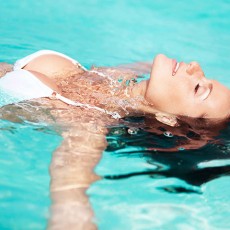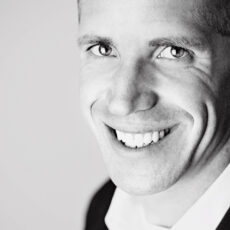Yoga.
What is it?
And 15 years ago, my first thoughts and assumptions of yoga would be people who can touch their toes, twist into pretzels and seemingly float through life calmly.
And most certainly, that might describe some of the people who practice yoga. But, as I have come to learn, it is not the full picture of yoga.
It is in fact, a way of life and some of the most notable and famous yoga practitioners never actually had a physical asana (yoga postures) practice. People like Ghandi and Mother Theresa are the perfect examples of this thought. Yoga is an 8-limbed path that goes beyond unrolling a yoga mat.
Two of the 8 limbs have a lot to do with being a good human being to yourself, to others and the world around you (yamas, niyama). These two limbs have little if anything to do with being able to touch your toes. And as a yoga practitioner moves deeper into their practice, only then, does āsana come in as the third limb of yoga. In the most traditional definition and understanding of āsana, it was in reference to a seated posture for meditation. What developed much later, and what we typically think of for yoga, was the physical postures/poses. The latter was developed to help relieve pain and aches in the body to prepare it for meditation. Rightfully, so… how could you think of sitting for a 60 minute meditation is your hip or low back is bothering you after a long day of work?
And deeper the yoga practitioner goes into the next limb of yoga; the breath (prānāyāma). I always say, that breathing to stay alive versus breathing to feel alive are two very different things. The breath is such an amazing tool we can learn to use as an indirect method of controlling the inner workings of ourselves (but that is a whole blog post in and of itself). When we become in tune with our breath, it then opens the door for the next limb of yoga which is our ability to draw inwards (Pratyāhāra). Allowing the world to fall away and to happen on that surface level as we ride the line between consciousness and unconsciousness in the magic space of peace, calm and clarity on many different levels.
The next three amigos in the limbs of yoga are all tied to meditation practice. Dhāraṇā, Dhyāna and Samādhi seem daunting but we have all been in these states of meditation at some point in our life.
Simply put, Dhāraṇā is the mind concentrating on a singular point while Dhyāna is the mind contemplating on the singular point chosen. Samādhi is when the mind becomes one with that singular point.
Whoa. That sounds complicated.
And it is not. It takes practice and takes time.
A visual I like to use for these three limbs is the mind as a vessel that contains oil. We enter into Dhāraṇā, and the vessel starts to tip just enough for singular drops to pour out. In between the drops of oil is when our mind flutters off to your to-do list, when it replays an old situation / conversation or when it starts to day dream. And as we enter into Dhyāna, the singular drops get closer and closer together until it is one continual stream. We reach Samādhi when there is no longer the vessel of the oil. We are just existing together.
As the ancient text of the Bhagavad Gītā states, there are several paths one can take. But they all lead to the same point of enlightenment.
Your yoga could be the physical practice, but it could also be something like your float practice.
Wait, what? What’s floating? Essentially, a pod is filled with water warmed to body temperature (so you can’t tell where the water begins and where you skin ends). The water is 3 times more buoyant than the Dead Sea with all the Epsom salts that are dissolved into the water and thus, you float effortlessly in the water. Pods have the ability to have ambient lighting inside and music as well, but if you prefer full sensory deprivation, it can be pitch black and absolutely silent. Personally, I love the Theta State Mashup offered at Clear Float to help me dial into a theta state (read this article by Huffpost about this state).
I find a float practice actually quite helpful in navigating my way in living yoga on a daily basis. Because, like so many, I am guilty of having the best intentions and sitting for meditation… but then, something happens and my attention is pulled away. Somebody slams a door, your phone pings, your stomach tells you to go to the kitchen, your partner / kid / pet needs you, and the list goes on (and on and on).
So when I schedule in a 1 hour float session, I am bringing myself to accountability to give myself 1 hour to reset so I be the best version of myself in living my yoga. And with the pod equipped with the ability to go completely dark and even completely silent, my ability to draw inwards is made all the more easy. I have even floated when my low back has thrown out, because of the weightlessness my body has in the saline water, the pain does not even register (as it would if I had to sit for 1 hour). Some days are better than others in the last three limbs of yoga for me, but I also know that life is like that and that a meditation practice is not perfect. Because there is no such thing. Sitting with yourself, even if your mind is racing the whole time, IS the benefit. Your mind is filing things away and organizing, much like defragmenting your hard drive and doing a hard reboot.
Physically carving out the time for me to go to clear float spa is a gift to myself where I know that no matter how busy I am, that I will feel better at the end of the float session.
If you are curious…to learn more about Kate Mak her yoga teacher training starts very soon and there are only a few spots left! Visit mynahschoolofyoga.com now!
Kate’s Yoga Teacher Training Info:
Mynah School of Yoga is proud to present Yoga Alliance Certified 200 hour and advanced 300 hour yoga teacher training’s. Click here to learn more
Applications are being accepted for 200 hour (October 2019 – February 2020) and advanced 300 hour (January 2020 – August 2020).





